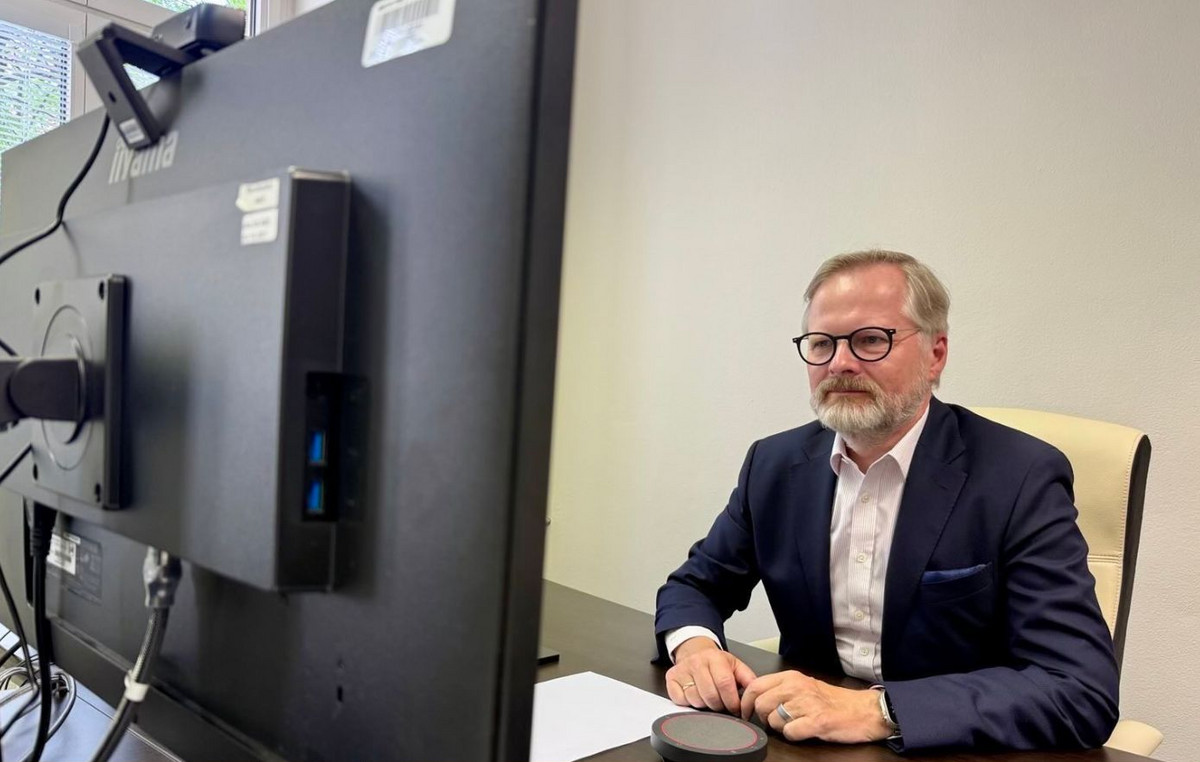Headache, sensitivity to light, smells or noises, nausea and vomiting, visual discomfort, tingling and dizziness. These are just some of the symptoms experienced by those who suffer from migraine a neurological, genetic and chronic disease.
Recent data released by the World Health Organization (WHO) point to migraine as the second leading cause of disability worldwide, and the first in Western European countries and Australia.
This week, the CNN Vital Signs presents the main characteristics of migraine, how to differentiate the problem from the common headache and what to do to prevent attacks. The program presented by the cardiologist Roberto Kalil airs this Sunday (23), at 7:30 pm, reinforcing the diversified content with the brand CNN Soft .
“We can summarize migraine by saying that it is a neurosensory processing disorder. This disorder is cyclic, that is, it happens in crises and can become chronic much more often. But what is at stake in the pathophysiology of migraine is a dysfunction in the way some centers that regulate perception function. For example, pain”, explains Marcio Nattan, neurologist at the Headache Group at Hospital das Clínicas de São Paulo.
“About 15% of the world’s population has migraine, something like a billion people. In Brazil, 31 million people suffer from migraine. This densification in the world is very similar to Brazil. Except, when we talk about chronic migraine, which is the migraine in which the person has 15 or more days of pain per month. She spends more time in pain than without. In Brazil, the rate is more common than in the rest of the world, around 5% of the population”, adds Nattan.
Migraine can be classified in different ways. Basically, it is possible to separate migraine with aura and without aura, according to experts.
Migraine with aura affects about 20% of people. They have difficulty seeing, such as blurring a field of view, the presence of bright spots, or difficulty focusing an image. Other symptoms are tingling in the arms that go up to the face or difficulty speaking. Treating this type of migraine requires a multidisciplinary team, which may include psychiatric professionals.
“Despite being a neurological diagnosis, the psychiatric aspects that migraine triggers, whether chronic pain, work disability, social disability, cause anxiety, can cause depression or other issues. As well as psychiatric conditions such as depression and stress, which can aggravate migraine. So, we always look very carefully, and very carefully, when someone arrives with this diagnosis, or with a complaint of chronic headache, or headache, which we still don’t have the diagnosis closed”, says Inah Proença, doctor psychiatrist at the Institute of Psychiatry, Hospital das Clínicas.
Advances in treatment
In the episode, experts warn that despite the anguish that migraine brings to the patient, it is necessary to avoid self-medication.
“The person who suffers from a headache tends to think that this is a normal thing and ends up resorting to taking a pain reliever. Often, she is unaware that there is a risk of developing what we call headache due to excessive use of analgesics. Over time, the person begins to notice that they no longer respond so well to the pain reliever, they need more and more. The goal of treatment is not just to stop using painkillers, more than that, it is that the person does not need to resort to painkillers as often”, explains Nattan.
“Uncontrolled self-medication is always a warning sign for migraine, for depression, for any other issue. These medicines taken the wrong way or administered in the wrong dosage can have great consequences for the body. And the chronic use of these medications can often worsen the migraine condition”, highlights Inah.
The measure used by medicine considers that anyone who uses painkillers ten days or more in a month is overusing them.
“It also has the amount of pills per day. We have patients who use 6 to 10 analgesic pills a day. This, in addition to worsening the frequency of headaches, also brings a risk to the stomach, to the liver, because these drugs are metabolized and end up influencing the gastrointestinal tract system. The main message is that preventive treatment will reduce the frequency of pain”, says Alexandre Ottoni Kaup, researcher and neurologist at Hospital Israelita Albert Einstein.
O CNN Vital Signs reveals the novelties of preventive treatment for migraine, such as the use of botulinum toxin and the new drugs available to patients. The program also presents tips on daily habits that help to avoid crises.
“Some activities help a lot in the treatment of migraine, such as physical activity. We have important data about taking care of sleep, which is fundamental. We see a very close association of sleep disorders, such as insomnia, such as sleep apnea, in the worsening of migraine. Disorders such as anxiety disorder and depression are also linked to worsening migraines. So, mental health care, good nutrition, is a health promotion and can help”, says Nattan.
Source: CNN Brasil
I am an experienced journalist and writer with a career in the news industry. My focus is on covering Top News stories for World Stock Market, where I provide comprehensive analysis and commentary on markets around the world. I have expertise in writing both long-form articles and shorter pieces that deliver timely, relevant updates to readers.







